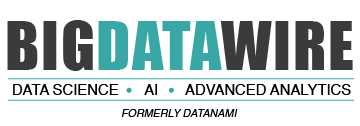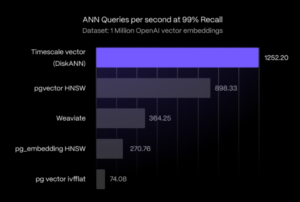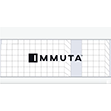
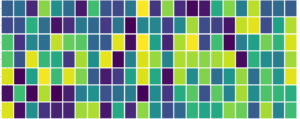
Organizations that are using TimescaleDB to store and query their time-series data may be interested to know that they can use the database to store and query vectors for GenAI applications, too.
Timescale is best known for developing an open source time-series database.. The New York City company added extensions to Postgres to make time-series data a first class data type for IoT type applications, including gaming.
With today’s launch of Timescale Vector, the company is now entering the market for vector databases, which is flourishing as a result of the massive interest in generative AI applications built atop large language models.
Vector databases serve as a sort of long-term memory for LLMs, such as OpenAI’s GPT-4 and Llama from Meta. By storing and indexing the mathematical representations of pieces of text trained by the LLM, dubbed vector embeddings, the vector database can more quickly match the GenAI application’s user input at run time to the most pertinent piece of training data encountered by the LLM.
In TimescaleDB’s case, the company adopted pgvector, the open source vector library for Postgres. In addition to incorporating pgvector, the company bolstered its vector capability by using an Approximate Nearest Neighbor (ANN) algorithm, which it claims gives it much better performance than both plain vanilla pgvector as well as dedicated vector databases.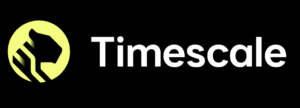
“We’ve built the additional support for these type of vector lookups that could enable people to build LLM models on top of it to answer … questions in a way that is much more performant, faster, and has better accuracy than other stuff that’s in the market,” says Michael Freedman, the CTO and co-founder of Timescale.
In a lengthy blog post today, the company shared some internal benchmark figures that it says proves its ANN index gives it better, faster performance on a dataset of 1 million OpenAI embeddings than competing vector databases.
The company claims it delivered 243% faster search speed at 99% recall than the vector database from Weaviate. It also claimed that it achieved about 39% faster search speed than pgvector’s ierarchical navigable small world (HNSW) algorithm and 363% faster search speed than pg_embedding.
“Timescale Vector optimizes hybrid time-based vector search, leveraging the automatic time-based partitioning and indexing of Timescale’s hypertables to efficiently find recent embeddings, constrain vector search by a time range or document age, and store and retrieve LLM response and chat history with ease,” the company writes in the blog.
In an interview with Datanami, Freedman also singled out Pinecone, which develops a dedicated vector database, as a new competitor. The problem with dedicated vector databases, Freedman says, is that they only store vector embeddings.
“But often you might have other relational data that you want to use in your question,” he says. “So if you’re building applications on Pinecone, you might need to deploy Pinecone and Postgres and something else, and then bring all that data together at query time and answer questions. If you’re using Timescale, it all sits together in one database, and you could actually build a lot of applications with a much simpler, operationally simpler stack.”
While TimescaleDB is best known as a time-series database, the company has since moved away from that niche and now considers itself to be a general database provider. It can not only store time-series and event data for IoT and gaming applications, but thanks to its Postgres core, it can store any relational data.
“We call ourselves Postgres ++,” Freedman says. “We’re Postgres ‘and.’ We’re not Postgres ‘or.’”
Having that underlying Postgres compatibility gives Timescale the capability to store the data for any organizations that are already using Postgres. That’s a considerable market, considering that Postgres is the world’s most popular database. And that has translated into a considerable amount of success for the open source offering, which counts tens of millions of users, Freedman says. The managed database service that Timescale offers in the cloud has about 1,000 paying customers, he says.
“They’re like, ‘Oh, I already use Postgres. I should just be using you for all of [my workloads],’” Freedman says. “As long as they want a relational database like Postgres, we can become a great go-to for Postgres.”
Timescale introduced its vector support to cloud customers a few months ago and today it’s officially announcing the start of the preview program. The company has attracted several early adopters for its vector capability, including PolyPerception, a European provider of recycling solutions.
“The simplicity and scalability of Timescale Vector’s integrated approach to use Postgres as a time-series and vector database allows a startup like us to bring an AI product to market much faster,” PolyPerception CEO Nicolas Bream says in the Timescale blog. “Choosing TimescaleDB was one of the best technical decisions we made, and we are excited to use Timescale Vector.”
Another early adopter, Blueway Software, is also finding the database a good fit for its GenAI development. “Using Timescale Vector allows us to easily combine PostgreSQL’s classic database features with storage of vector embeddings for Retrieval Augmented Generation (RAG),” says Alexis de Saint Jean, the company’s Innovation Director. “Timescale’s easy-to-use cloud platform and good support keep our team focused on imaging solutions to solve customer pains not on building infrastructure.”
You can learn more at www.timescale.com.
Related Items:
The Human Touch in LLMs and GenAI: Shaping the Future of AI Interaction
TimescaleDB Delivers Another Option for Time-Series Analytics
Home Depot Finds DIY Success with Vector Search
Editor’s note: This article has been corrected. The vector feature is in preview, not general availability. Datanami regrets the error.
July 7, 2025
- Indico Data Unveils Embedded Data Enrichment Agents to Supercharge Insurance Decisioning
- EXL Named a Leader in Everest Group Data and AI Services Specialists PEAK Matrix Assessment 2025
- Denodo Launches DeepQuery to Power AI with Real-Time Enterprise Data
- CoreWeave to Acquire Core Scientific in $9B All-Stock Deal
July 3, 2025
- FutureHouse Launches AI Platform to Accelerate Scientific Discovery
- KIOXIA AiSAQ Software Advances AI RAG with New Version of Vector Search Library
- NIH Highlights AI and Advanced Computing in New Data Science Strategic Plan
- UChicago Data Science Alum Transforms Baseball Passion into Career with Seattle Mariners
July 2, 2025
- Bright Data Launches AI Suite to Power Real-Time Web Access for Autonomous Agents
- Gartner Finds 45% of Organizations with High AI Maturity Sustain AI Projects for at Least 3 Years
- UF Highlights Role of Academic Data in Overcoming AI’s Looming Data Shortage
July 1, 2025
- Nexdata Presents Real-World Scalable AI Training Data Solutions at CVPR 2025
- IBM and DBmaestro Expand Partnership to Deliver Enterprise-Grade Database DevOps and Observability
- John Snow Labs Debuts Martlet.ai to Advance Compliance and Efficiency in HCC Coding
- HighByte Releases Industrial MCP Server for Agentic AI
- Qlik Releases Trust Score for AI in Qlik Talend Cloud
- Dresner Advisory Publishes 2025 Wisdom of Crowds Enterprise Performance Management Market Study
- Precisely Accelerates Location-Aware AI with Model Context Protocol
- MongoDB Announces Commitment to Achieve FedRAMP High and Impact Level 5 Authorizations
June 30, 2025
- Inside the Chargeback System That Made Harvard’s Storage Sustainable
- What Are Reasoning Models and Why You Should Care
- Databricks Takes Top Spot in Gartner DSML Platform Report
- LinkedIn Introduces Northguard, Its Replacement for Kafka
- Change to Apache Iceberg Could Streamline Queries, Open Data
- Agentic AI Orchestration Layer Should be Independent, Dataiku CEO Says
- Top-Down or Bottom-Up Data Model Design: Which is Best?
- Fine-Tuning LLM Performance: How Knowledge Graphs Can Help Avoid Missteps
- Stream Processing at the Edge: Why Embracing Failure is the Winning Strategy
- Iceberg Ahead! The Backbone of Modern Data Lakes
- More Features…
- Mathematica Helps Crack Zodiac Killer’s Code
- ‘The Relational Model Always Wins,’ RelationalAI CEO Says
- Confluent Says ‘Au Revoir’ to Zookeeper with Launch of Confluent Platform 8.0
- Solidigm Celebrates World’s Largest SSD with ‘122 Day’
- The Top Five Data Labeling Firms According to Everest Group
- DuckLake Makes a Splash in the Lakehouse Stack – But Can It Break Through?
- Toloka Expands Data Labeling Service
- Supabase’s $200M Raise Signals Big Ambitions
- Data Prep Still Dominates Data Scientists’ Time, Survey Finds
- With $17M in Funding, DataBahn Pushes AI Agents to Reinvent the Enterprise Data Pipeline
- More News In Brief…
- Seagate Unveils IronWolf Pro 24TB Hard Drive for SMBs and Enterprises
- Databricks Unveils Databricks One: A New Way to Bring AI to Every Corner of the Business
- Gartner Predicts 40% of Generative AI Solutions Will Be Multimodal By 2027
- Astronomer Unveils New Capabilities in Astro to Streamline Enterprise Data Orchestration
- BigBear.ai And Palantir Announce Strategic Partnership
- Databricks Donates Declarative Pipelines to Apache Spark Open Source Project
- Deloitte Survey Finds AI Use and Tech Investments Top Priorities for Private Companies in 2024
- Code.org, in Partnership with Amazon, Launches New AI Curriculum for Grades 8-12
- Atlan Launches AI Data Quality Studio for Snowflake
- Databricks Launches Lakebase, a New Class of Operational Database for AI Apps and Agents
- More This Just In…
